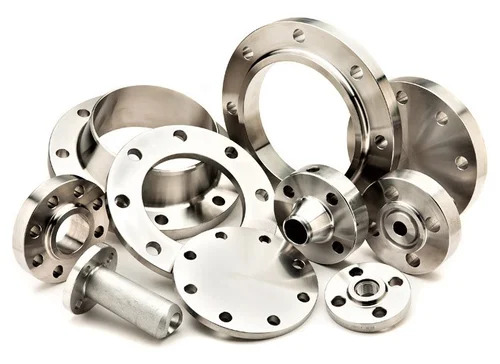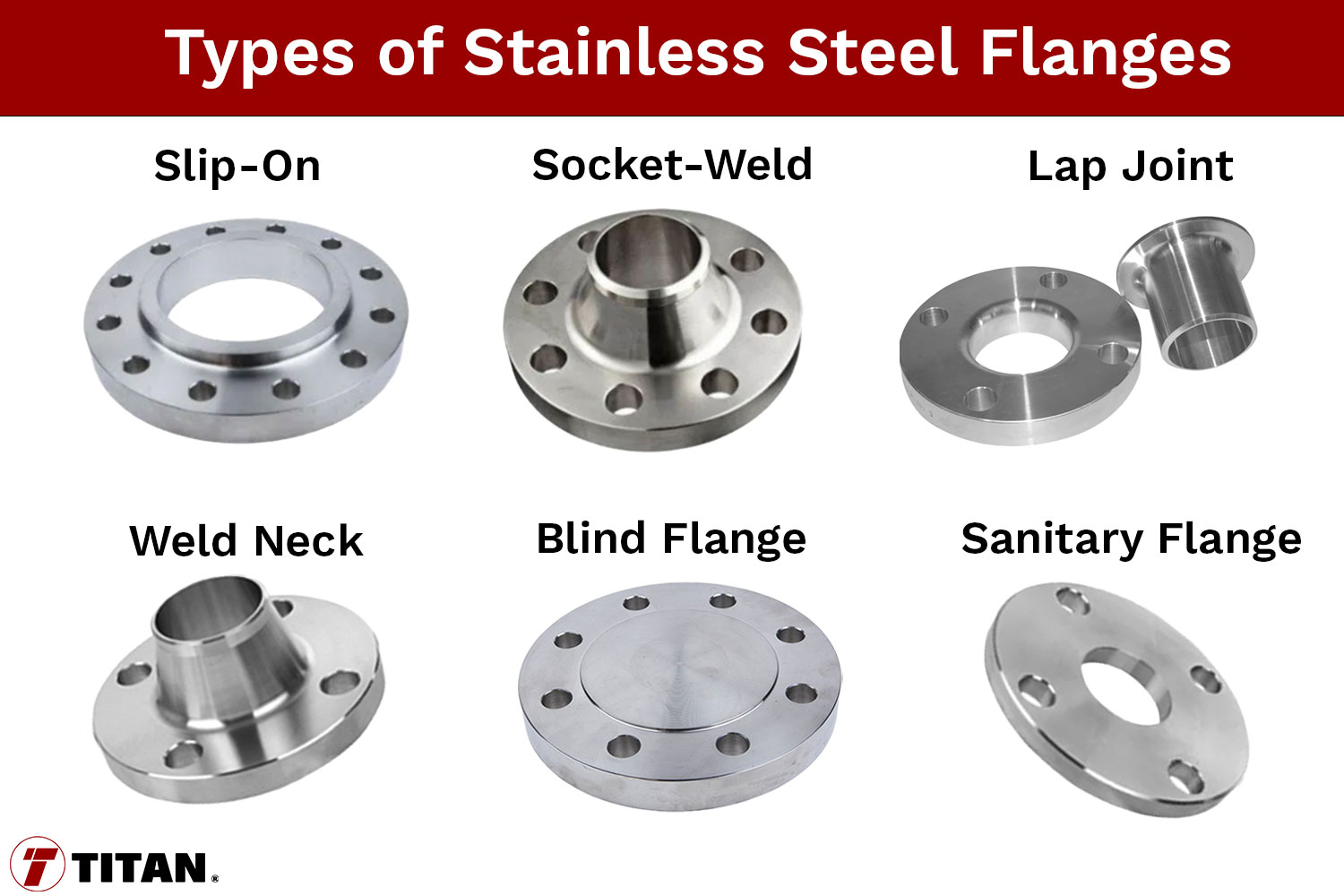A Comprehensive Guide to Flange Basics

A Comprehensive Guide to Flange Basics
Flanges link pipes, valves, and other elements in piping networks. They ensure a leak-proof bond and are essential for many applications. A flange connection involves two pieces affixed to pipe ends, bolted or welded together. This firm fastening also allows for straightforward disassembly if bolted together. With certain variations, such as sanitary flanges, a gasket is used to ensure a secure seal. Flanges are available in diverse materials like carbon and stainless steel, suiting various uses and settings. This article delves into flanges, discussing their relevance, categorization, sizes, and beyond. Continue reading as we decode a key element of our contemporary infrastructure.
Usage of Flanges
Flanges fulfill multiple critical roles in piping networks. They facilitate the easy joining of pipes for a leak-free bond and provide a seal surface to avert fluid escape. Flanges also bolster pipelines, spreading the load among flange bolts, and uphold structural soundness. They help in managing and directing fluid movement by incorporating valves or other flow-regulating devices. Key to numerous sectors like manufacturing, petrochemical, and plumbing, flanges are crucial for joining and separation in piping systems. These components ensure a robust, leak-free junction, facilitating fluid transport safely and efficiently.
Flanges' Significance in Plumbing & Piping
In piping networks, flanges are pivotal for assembly purposes. They avert leaks in pressurized settings, enabling secure fluid movement in industrial contexts. Flanges are crucial for enabling smooth pipe connections. Flange usage boosts efficiency and safety in varied applications, underscoring their importance in piping realms.
Knowing face types and material is essential across many industrial applications. As an example, stainless steel flanges guarantee extended usability and durability, particularly in petrochemical projects. With adherence to ASME and ASTM standards, production quality can be maintained.
Examining Flange Varieties: An In-Depth Look
Investigating the array of pipe flange types, each with distinct characteristics and uses. Delving into standards by bodies like the American Society of Mechanical Engineers (ASME) and the American Society for Testing and Materials (ASTM) to assure quality and compatibility in piping networks. Flanges designed for hydraulic applications are also made to the SAE standard J518/ISO 6162.
1) Slip-On Flanges
Slip-on flanges are commonly employed in piping systems for their ease of installation, cost-effectiveness, and versatility. These flanges, which slide over the pipe before being welded, are particularly advantageous in scenarios where quick installation and reduced material costs are priorities, as they do not require matching the pipe's thickness. While they are suitable for a range of applications, including both high and low temperatures and pressures, slip-on flanges are less ideal for high-pressure or high-temperature conditions compared to other flange types like weld neck flanges. Their lighter weight and easier alignment process further contribute to their utility in moderate conditions, making them a practical choice for non-critical, lower-pressure services.
2) Socket-Weld Flanges
Socket-weld flanges are used primarily in smaller diameter, high-pressure piping systems. They are designed to provide a strong, reliable connection where the pipe is inserted into a recessed area of the flange, known as the socket, and then welded. Socket-weld flanges are particularly beneficial in piping systems that require a smooth flow of fluid without any significant turbulence, which is often a requirement in chemical, petrochemical, and steam applications. Their design helps in reducing the possibility of leakage and is ideal for applications where the risk of fluid leakage must be minimized, such as in high-pressure and high-temperature environments. Additionally, they offer ease of alignment and assembly, which can be advantageous during the installation process.
3) Lap Joint Flanges
Lap joint flanges are particularly useful in piping systems that necessitate regular disassembly and maintenance, as they facilitate easy alignment and access. Comprising two parts, the stub end and the flange, these flanges allow for easy assembly and disassembly: the stub end is welded to the pipe while the flange fits over it. Their design enables the flange to rotate, simplifying bolt hole alignment, especially beneficial in complex or large pipe systems. Ideal for applications with expensive or lined pipes, lap joint flanges are cost-effective since only the stub end needs to match the pipe material or lining, allowing for a less expensive material for the flange itself. This makes them a practical choice for systems requiring frequent inspection, cleaning, and in scenarios where installation ease and cost-effectiveness are key considerations.
4) Weld Neck Flanges
Weld neck flanges are extensively employed in industrial settings requiring high-pressure tolerance, such as chemical processing plants, power generation facilities, and construction sites. They are designed for secure and durable connections between pipes, valves, and other components in a piping system. Available in various types like standard long, extra long, integral, and nipoflange, each serves specific applications ranging from low-pressure environments to heavy-duty systems and connections where welding is impractical. Their key advantage lies in their robust, leak-proof design, offering long service life and stress reduction, crucial in high-pressure scenarios.
5) Blind Flanges
Blind flanges are solid discs used predominantly to seal off pipeline ends, providing an effective means of preventing fluid or gas escape in various systems. Widely utilized in industries such as water systems, chemical manufacturing, and construction, blind flanges facilitate pipeline extensions and are invaluable in pressure testing. They are designed for high-pressure environments and are available in various materials like A36 steel plate and stainless steel, catering to specific requirements. The installation of blind flanges involves ensuring a clean and smooth pipe end before attaching the flange with bolts for a secure seal.
6) Sanitary Flanges
Sanitary flanges, predominantly utilized in the pharmaceutical, biotech, and food and beverage industries, are designed for applications where cleanliness and sterility are paramount. These flanges facilitate quick assembly and disassembly for regular cleaning and maintenance, ensuring hygiene standards are upheld. Characterized by their smooth, non-contaminating surfaces, sanitary flanges prevent the accumulation of bacteria and other contaminants. Their design adheres to strict industry standards, such as those set by the 3-A Sanitary Standards and ASME-BPE, to ensure the integrity and quality of products passing through the piping systems.
Frequently Asked Questions
What are flanges?
Flanges are ring-like fittings used to connect pipes, valves, pumps and other equipment in a piping system. They provide easy access for cleaning, inspection or modification.
How do I choose the right stainless steel flange for my application?
Choosing the right flange depends on several factors, including the size and type of the pipes being connected, the pressure and temperature of the system, the fluid being transported and the specific environmental conditions. When choosing between stainless steel and carbon steel for a flange, consider the operating environment and requirements. Stainless steel offers superior corrosion resistance and is ideal for harsh, acidic, or chlorine-rich environments, but it's more expensive. Carbon steel, being stronger and more cost-effective, is suitable for high-pressure applications and less corrosive environments. Additionally, consider factors like temperature tolerance, weldability, maintenance needs, and industry-specific standards in your decision. Refer to the above guide to review the different types of flanges and their typical applications.
How are flanges installed?
The installation of steel and/or stainless steel flanges involves aligning the flanges on either end of the pipes, inserting the appropriate gasket between them and then securing the assembly with bolts. The specific installation process can vary depending on the flange type and the application.
Conclusion
In the realm of modern infrastructure, flanges are essential for creating robust, leak-proof connections in piping systems across various industries. They come in different forms, including slip-on, socket-weld, lap joint, weld neck, blind, and sanitary flanges, each tailored to specific applications. The material versatility of flanges ensures adaptability across diverse environments. This guide underscores the importance of understanding the unique features and proper use of each flange type, demonstrating their indispensable role in ensuring the integrity, efficiency, and safety of global piping networks.

